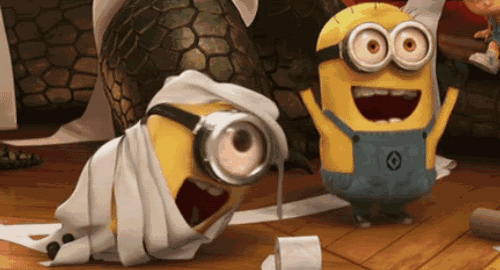Technical Perspectives | Information Value and Identity System in the Blockchain World
01 The value of information
You may have thought about such a question: What is the core of the blockchain network?

Figure | Network
- South Korea: Seoul City will launch S-coin and launch the first blockchain administrative service in November
- Samsung Dapp Store now offers 17 encryption apps for wallet, gaming and entertainment apps
- Interesting blockchain experiment: Why is the gold coin depreciated 6.6 times?
It may be understood as: the assumption of the behavior of the node.
The nodes follow the assumption of the consensus algorithm , the evil nodes are found and punished, and the trusted blockchain network is formed, so the chain application developed based on this network environment is also considered to be trustworthy.
However, we have to admit that the node accounting behavior of the blockchain network will form redundancy to a certain extent, resulting in high information uplink cost. The general business needs to have certain conditions for the complete use of blockchain smart contracts, so the blockchain application is more suitable for high-value transactions, among which financial affairs are the most representative.
So, is financial affairs the only scenario of blockchain? The answer is obviously not.
This problem will return to the original form of the blockchain. The blockchain network creates a benign competitive business environment, in which many high-value business scenarios are intertwined, which is also a potential service scenario for the blockchain. The value of information is gradually improved with processing and circulation, and users have active governance rights for valuable data as the core of user data autonomy.
After the user data is autonomous, with the blockchain tamper-proof and traceable features, the use and flow of data becomes transparent, and the user value of the data is also increased. The identity of the data and the identity of the user can be quantified. Further, with the development of Internet of Things technology, machines can also have data and even have identity.
It is in this context that the identity system of "people, money, things, things" came into being.
02 Identity System
In the final analysis, the Internet is an information interconnection , and its value reflects the value of Internet information. The blockchain is built on top of distributed system technology and also has the characteristics of the Internet. So we can boldly think that the value of the Internet can be realized in the blockchain.
The development of the Internet goes through two phases:
• From Web 1.0 : The maker of information is not the owner of the information, forming the user-centered collection of information. The information is owned by the centralized information service provider, and the secondary use of the information is not even known to the manufacturer of the information;
• From Web 1.0 to Web 2.0 : With a centralized platform service, a user-to-peer communication network is formed. The value metric of an Internet application translates into the value that users bring to the app.
On this basis, a simple understanding of the blockchain identity system is the decentralized version of the account system in the centralized Internet system. The distributed trust of the blockchain is used by the identity system scheme to the general Internet business application.
For example: if you want to go to a country, what they need may be your status as a student or other status as you enter the country. They will ask for proof of what I want, and if you don't have it, you can't meet the requirements.
The need to trust a group is to propose methods rather than arbitrarily determined by the individual. As we said, "surfing the Internet" has become a "social person." In this you may play multiple identities. Some characters are real and some are false, but in fact they are not even aware of the participants.

Figure | Network
When a person is in a different circle of life, they will encounter different standards of trust, which is the value of identity. You can't be sure that your identity will be valuable under what circumstances. This process of quantification is different from a fixed trust endorsement. Individuals trust a person because they are willing to believe and believe, not because they trust a person because of strong endorsement. It can be said that, to a certain extent, this is a relationship determined by the parties to buy and sell trust. Virtual identity is the credibility of helping to accumulate identity during use. Then when you need to use it, you can use it directly instead of building trust from zero every time . In the identity system of blockchain networks, virtual identities are first established by individuals, rather than by others, and individuals can selectively reveal different identities, or part of virtual identities, to the audience.

Figure | Network
Valuable identity uses application services and continues to reward application services. Different applications have different target user groups, and the target users are positioned more and more accurately.
In the following articles, we will conduct further analysis and welcome attention.
Source: Ontology
We will continue to update Blocking; if you have any questions or suggestions, please contact us!
Was this article helpful?
93 out of 132 found this helpful
Related articles
- Dry goods | comprehensive overview decentralized predictor
- Digital Money Hosting Alliance White Paper
- Getting started with blockchain | What is the difference between spot leveraged trading and futures contracts? Risk geometry?
- US Treasury Secretary: Libra is involved in “national security” and may be abused by terrorists
- VC such a hot blockchain | Interpretation of the first half of the financing report
- Institutional running into the blockchain: Who are, what, what is the impact?
- Who is competing for C? Read the encrypted payment contest






